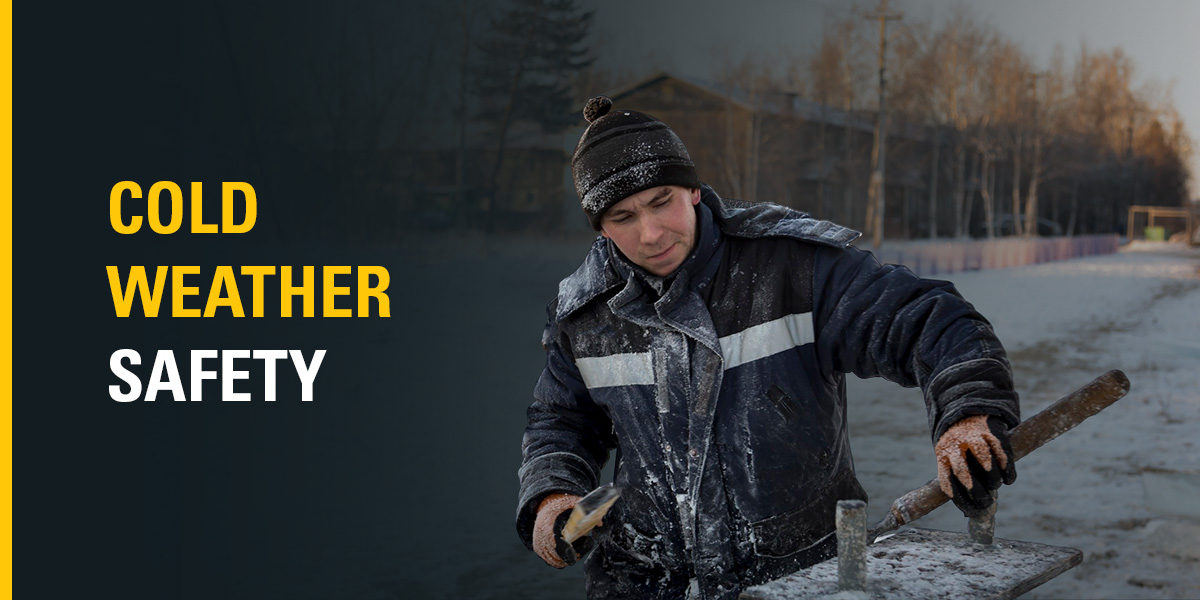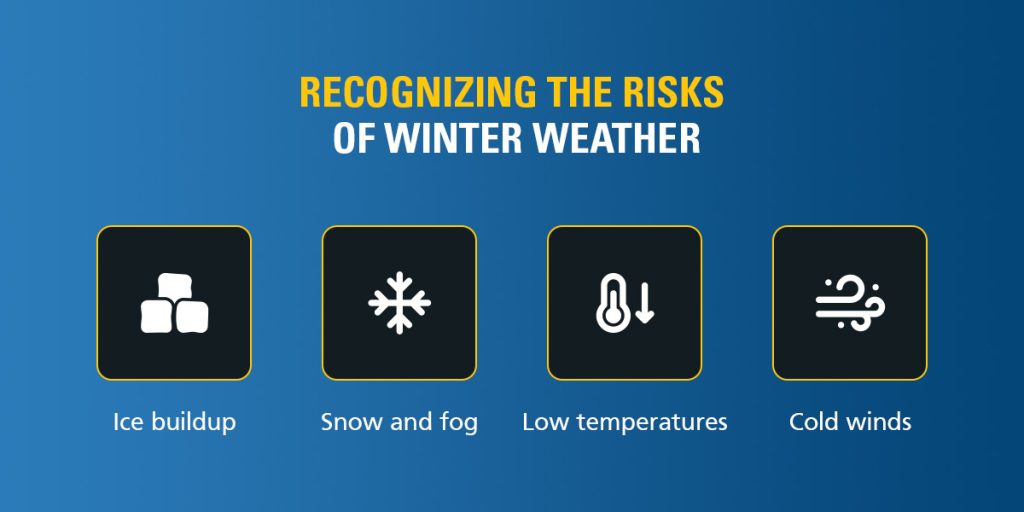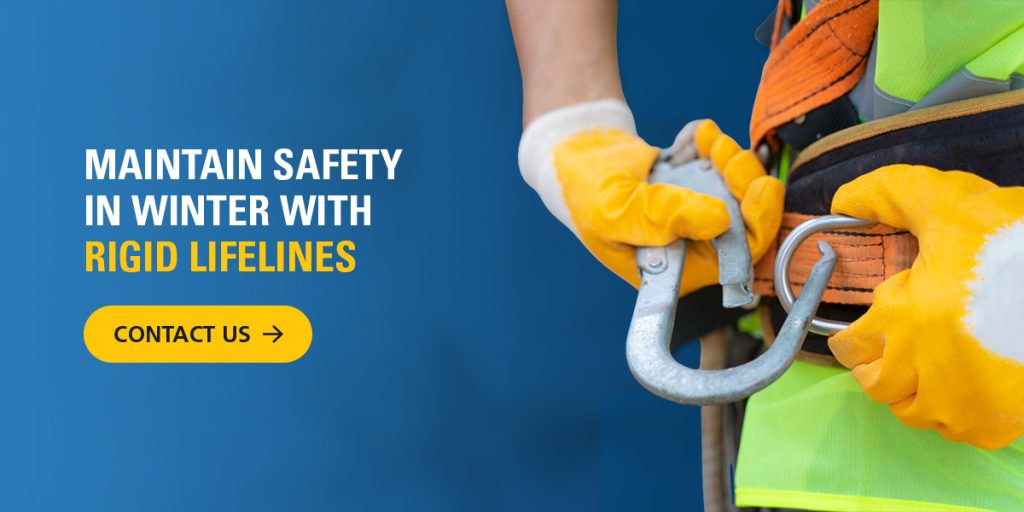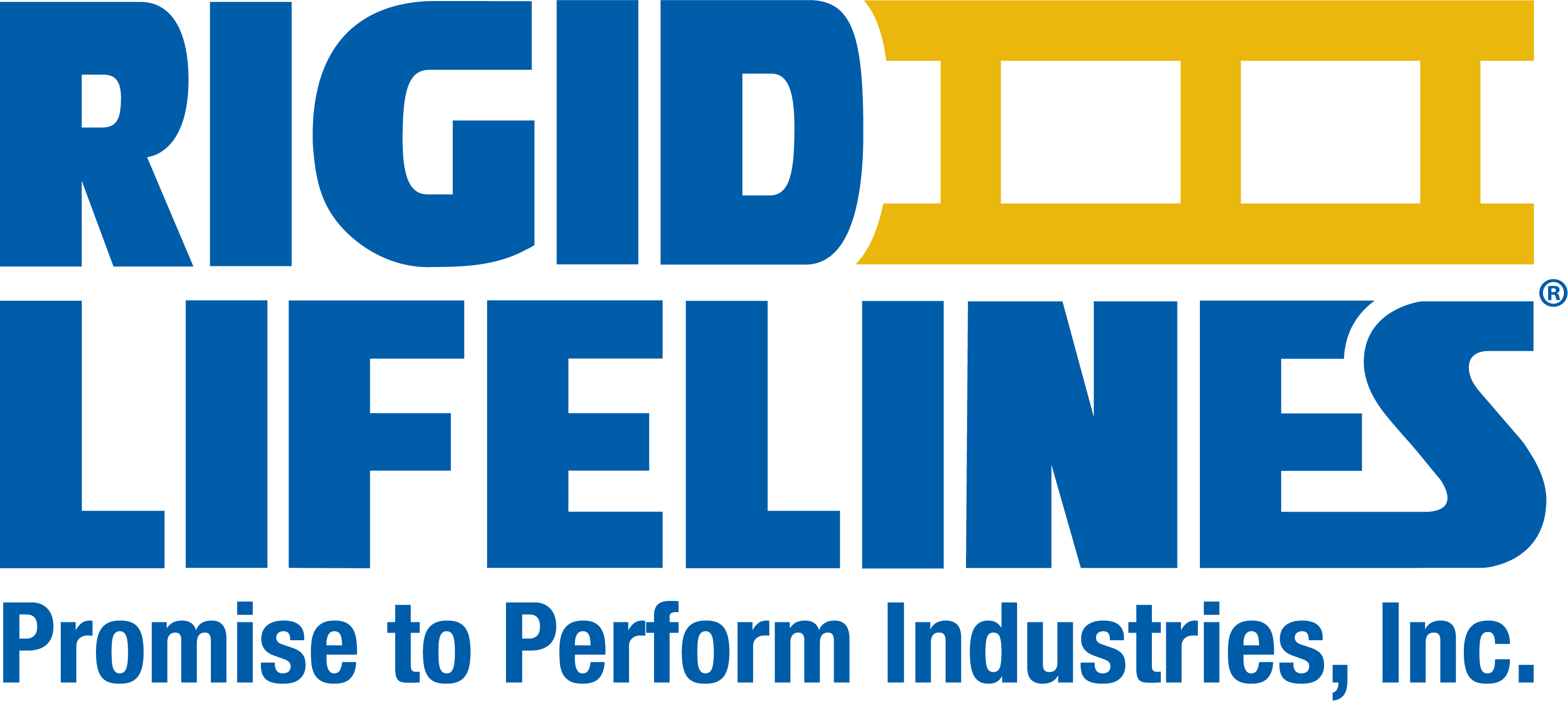
Fall Protection for Icy Conditions
June 20, 2025
Cold Weather Safety
When winter sets in, it doesn’t just introduce freezing temperatures. It brings with it a new set of challenges for outdoor workers, from general discomfort to dangerous elements like snow, ice buildup, and winds that heighten the risk of falls, collisions, and frostbite.
In this cold-weather safety toolbox talk for height workers, we address the challenges of winter weather, safety tips, and fall protection systems needed to promote safety at jobsites.
Recognizing the Risks of Winter Weather

Working at height poses unique dangers. Winter weather can make an already challenging situation even more threatening by introducing multiple hazards and contributing to an influx of equipment malfunctions.
Here are some of the common risks and challenges posed by cold weather conditions:
- Ice buildup: Once temperatures fall below freezing, ice can buildup in the work area, increasing the chances of slips and falls. The risk is even higher without appropriate fall protection systems or if equipment is exposed to the elements.
- Snow and fog: Reduced visibility is a potential hazard during snowfall and fog. Fog and sheets of heavy snowfall can negatively impact visibility.
- Low temperatures: When working outdoors, freezing temperatures are a safety risk as they can cause frostbite and hypothermia. The cold can also impair mobility, significantly reducing your reaction time and exposing you to more dangers.
- Cold winds: While cold winds are common in winter, when working at height, the wind makes you unstable, increasing the risk of falling or harming oneself with work tools.
Fall Protection in Icy Conditions
Falls can become more frequent in cold weather because walking and working surfaces are compromised. Here’s an overview of fall protection solutions for winter weather:
1. Enclosed Track Profile
Rigid Lifelines utilizes enclosed track that protects the trolley and the track’s rolling surfaces. By enclosing the trolley, we shield one of the major connection points between a person and their anchorage. The trolley and enclosed track work together to provide an efficient and reliable fall protection solution.
In addition, the enclosed track protects the trolley, ensuring it remains free-wheeling and fully functional regardless of exposure to ice, snow, or rain. The enclosed track profile is present on all of our fall protection systems, making it almost impossible for water, ice, or rust to damage the trolley.
2. Aluminum Systems for Extreme Cold
If there are concerns about extreme cold temperatures at an installation location, our engineers will recommend certain materials depending on the temperatures at play. Various metallurgy tests have revealed interesting information about the strength of the primary metals we use for our systems (steel and aluminum). Aluminum has been proven to have phenomenal strength in very cold temperatures.
3. High Wind Solutions
If the fall protection system is in a location where there are extremely high winds, there are systems with features that can prevent these issues. While installing a swing arm system in a windy location, the boom can have a lock placed on it to prevent the arm from swinging around while a worker is attached to the system.
Also, when using the Rolling A-Frame system in an area with high winds, there are special wheel locks that can prevent the A-Frame from running amok across a worksite.
4. Steel Cable Self-Retracting Lifelines (SRLs)
If you are going to need fall protection outdoors and you live in an area that tends to experience intense winter weather, you should make sure that you are using a steel cable SRL for effective fall arrest. Steel cable SRLs are recommended for heavy winter, outdoor applications because they are more robust.
How Cold Conditions Lead to System Failures
The dangers of winter weather are not restricted to the increase in slippage and falls. You may take precautionary measures by using fall protection systems, but the weather can also render these systems incapable of providing adequate security.
For instance, cold temperatures may cause brittleness in metal, affecting anchor strength. The buildup of ice can also cause lifelines to go slack, resulting in longer fall distances, which can be fatal if the line doesn’t become taut before surface contact.
Reduce the chances of your fall protection systems failing by:
- Conducting thorough inspections: Regular equipment inspections before and after each use are essential to ensure that the equipment maintains structural integrity.
- Avoiding faulty equipment: If you suspect safety equipment is faulty after spotting signs like cuts and visible wear, it’s time to decommission it.
- Training workers: Training workers to identify equipment vulnerabilities in winter weather can save lives.
- Purchasing reliable systems: It’s vital that you source your fall protection systems from a reputable provider to ensure quality and durability. These systems should be rated for winter use.
Safety Tips for Working in Cold Weather
Preparing for the cold season is the best line of defense against its challenges. Here are cold-weather safety tips for outdoor workers:
- Clear snow and ice: Work areas, including walkways, ladders, and elevated surfaces, need sufficient snow removal before work begins.
- Use sand or salt: Besides its role in clearing snow, salt can help improve traction around the work area. Alternatively, apply sand to prevent slipping.
- Ensure proper use of PPE: Ensure that everyone wears appropriate personal protective equipment (PPE). That includes insulated clothing and boots with ample traction.
- Update safety protocols: Each season behaves differently. Update safety measures to reflect seasonal changes and plan ahead for unforeseen circumstances.
Maintain Safety in Winter With Rigid Lifelines
While winter weather brings unique safety challenges, you can help overcome them with adequate preparation and the right equipment. Recognizing common risks and updating our safety practices is crucial. At Rigid Lifelines, we employ industry-leading expertise and technology to provide you with reliable fall protection systems. Find a representative near you to discuss safer solutions for cold weather.

Categories
Share this post
Let us help you
Contact us today to find the perfect product fit for your job
